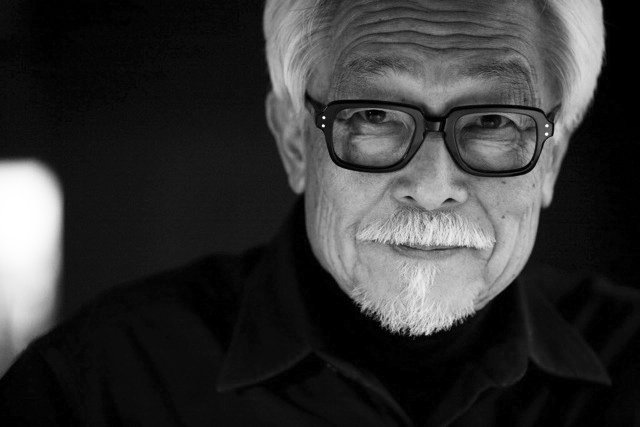Allen Say
The author and illustrator of more than twenty works, Allen Say has spent much of his time living between the cultures of the United States and Japan. Say was born in Yokohama, Japan in 1937. His mother, like the little girl in Grandfather’s Journey and the young woman in Tea with Milk, was American-born of Japanese descent and raised in California. She returned to Japan with her family at eighteen. His father was a Korean orphan who had been adopted by an English family and raised in Shanghai, China.
From a young age, Say loved to draw and would be frequently found making pictures. World War II broke out when he was only four years old, causing the Say family to move to a rural Japanese village and later, the island of Kyushu. Always changing homes and going to new schools made him feel uncomfortable wherever he lived. "So I escaped into reading and drawing," he recalls. "The marvelous thing that happened to me was that during recess I would draw. Students would stand behind me and watch. That's probably the first time I discovered that I had this power — it was the only power I had."
When he was twelve, his parents divorced and he went to live in Tokyo with his grandmother. There, Say apprenticed under Noro Shinpei, Japan’s leading cartoonist and the man he came to love as his “spiritual father.” Say moved to California with his father at the age of sixteen. As a young man he went to a military academy, studied architecture at the University of California at Berkeley, spent two years in the U.S. Army, and eventually settled into a career in advertising. Say worked as a commercial photographer for twenty years before he stumbled into his career as an author-illustrator. His work brought him in contact with art directors and designers, who were often impressed with his ability to sketch out ideas before committing them to film. It was the encouragement of these people that led Say to freelance as an illustrator. His first book, Dr. Smith's Safari, was published in 1972.
For years, Say continued writing and illustrating children's books on a part-time basis. But it was while illustrating The Boy of the Three Year Nap, winner of a 1989 Caldecott Honor, that he recaptured the joy he had known working in his Sensei’s (Master's) studio. Since then he has written and illustrated many books including Grandfather's Journey, winner of the 1994 Caldecott Medal. He was inevitably attracted to exploring the divide of his Japanese youth and his American coming of age. Consequently, these and such other personal and family experiences often form the soul of his books.
“ Most people seem to be interested in turning their dreams into reality. Then there are those who turn reality into dreams. I belong to the latter group.”
When Say creates a book, he wants his pictures to tell the story. Sometimes he paints half the pictures for a book before he knows for sure what the story will be about. He says some of his best ideas could only come to him through pictures, not words. "You react physically to a work of art," Say remarks. "When you break out in goose pimples, then you know you have something."
Related Exhibitions: Journey of Memory: Allen Say (2014), co-curated with the Eric Carle Museum of Picture Book Art


